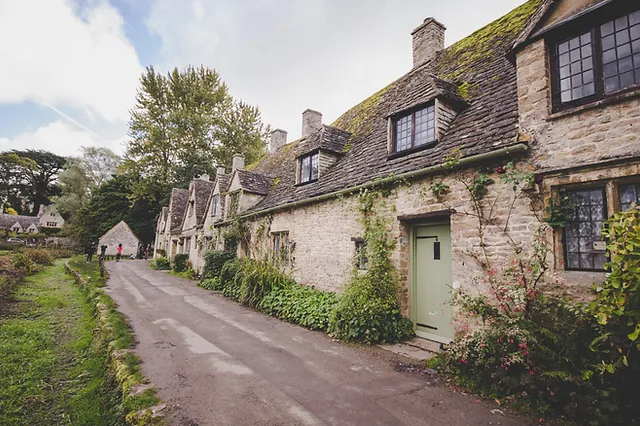Introduction to Romanesque and Gothic Architecture
Romanesque and Gothic architecture are two distinct styles that have left a lasting impact on the history of art and architecture. While Romanesque is characterized by its thick walls, rounded arches, and sturdy appearance, Gothic architecture is known for its pointed arches, ribbed vaults, and flying buttresses.
Both styles showcase intricate detailing and craftsmanship but differ in their overall aesthetic and structural elements. The evolution of these architectural styles was influenced by various factors such as religion, technological advancements, social changes, and artistic innovations.
Characteristics of Romanesque Architecture
Romanesque architecture is known for its sturdy and robust structures, characterized by thick walls and rounded arches. The buildings often have small windows with decorative stonework surrounding them, creating a sense of strength and security.
One key feature of Romanesque churches is the use of barrel vaults to support the roof, providing a sense of grandeur and stability. The interiors are typically adorned with intricate carvings and frescoes depicting biblical scenes, adding to the space’s religious significance.
The use of alternating stone colors adds depth and texture to the facades, while ornate portals with sculpted figures draw visitors into these impressive structures. Pilgrimage routes often featured Romanesque churches along the way, showcasing their importance in medieval society.
Romanesque architecture reflects a time when religion played a central role in people’s lives, influencing every aspect of artistic expression.

Characteristics of Gothic Architecture
One key characteristic of Gothic architecture is its verticality. Buildings in this style often feature tall spires, pointed arches, and soaring ceilings that draw the eye upwards. This sense of height creates a feeling of transcendence and grandeur.
A defining trait of Gothic architecture is the extensive use of stained glass windows. These intricate windows not only fill spaces with colorful light but also teach religious stories to illiterate worshippers.
Gothic buildings are known for their ornate decoration, including elaborate carvings, sculptures, and gargoyles adorning their facades. This attention to detail adds richness and complexity to the overall design.
Flying buttresses are another hallmark of Gothic architecture. These external supports allowed for thinner walls and larger windows, enabling architects to create more open and light-filled interiors.
Gothic architecture is characterized by its aspiration toward heaven through height and light while showcasing exquisite craftsmanship in its decorative elements.
Similarities between Romanesque and Gothic Architecture
When exploring the world of architecture, it’s fascinating to discover the similarities between Romanesque and Gothic styles. Both architectural movements were significant during the Middle Ages, showcasing intricate designs and impressive structures that stood the test of time.
One common feature between Romanesque and Gothic buildings is their use of arches. Both styles incorporated various types of arches in their design, adding a sense of grandeur and stability to the structures.
Both Romanesque and Gothic architectures often featured elaborate sculptures and decorations on their facades. These intricate details served not only as decorative elements but also conveyed religious stories or symbols important to the period.
Both styles strongly emphasized verticality in their designs. This focus on height created soaring interiors that inspired awe in visitors and worshippers alike.
Differences between Romanesque and Gothic Architecture
When comparing Romanesque and Gothic architecture, one of the key differences lies in their structural design. Romanesque buildings tend to have thick walls, small a windows, rounded arches, and sturdy pillars. On the other hand, Gothic architecture is characterized by its pointed arches, flying buttresses, ribbed vaults, and larger stained glass windows.
A notable distinction between the two styles is their decorative elements. Romanesque structures often feature intricate carvings on doorways and columns depicting biblical scenes or decorative motifs. In contrast, Gothic buildings are known for their elaborate sculptures adorning facades and interiors to emphasize religious narratives.
In terms of height and lightness, Gothic architecture surpasses Romanesque by incorporating innovative engineering techniques that allow for taller spires and expansive interior spaces flooded with natural light from colorful stained glass windows.
While both architectural styles share some similarities in their historical context and religious significance, the differences in design principles showcase unique characteristics that set them apart aesthetically.
Evolution and Influences of Each Style
Various influences over time shaped the evolution of Romanesque and Gothic architecture. Romanesque architecture emerged in the 11th century, characterized by thick walls, round arches, and sturdy pillars. It drew inspiration from Roman construction techniques and Byzantine aesthetics.
As society evolved, so did architectural styles. The transition to Gothic architecture in the 12th century brought about a shift towards taller structures with pointed arches, ribbed vaults, and flying buttresses. This new style reflected advancements in engineering and a desire for more light-filled spaces.
Religious beliefs heavily influenced Gothic architecture during the Middle Ages. Cathedrals became towering expressions of faith and power, incorporating intricate stained glass windows depicting biblical stories.
Both Romanesque and Gothic styles continue to influence modern architecture today. Their legacy lives on in churches, castles, and civic buildings across Europe, showcasing the enduring impact of these historic design movements.




